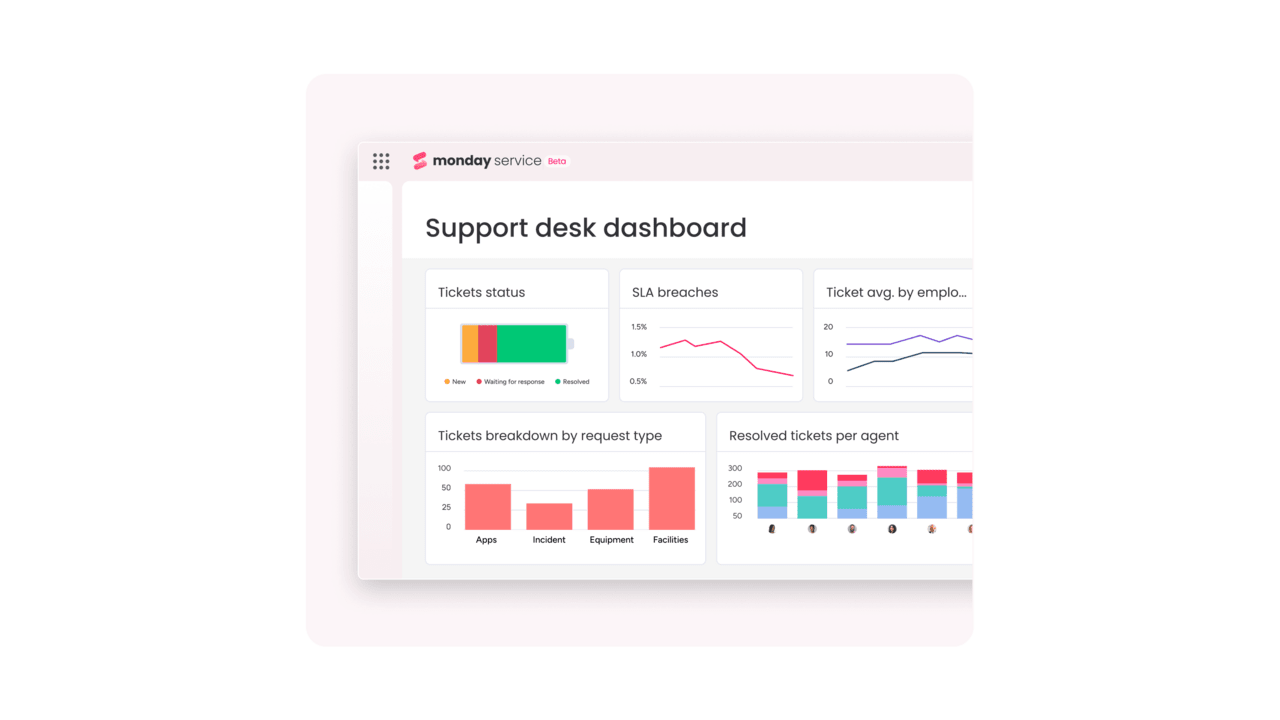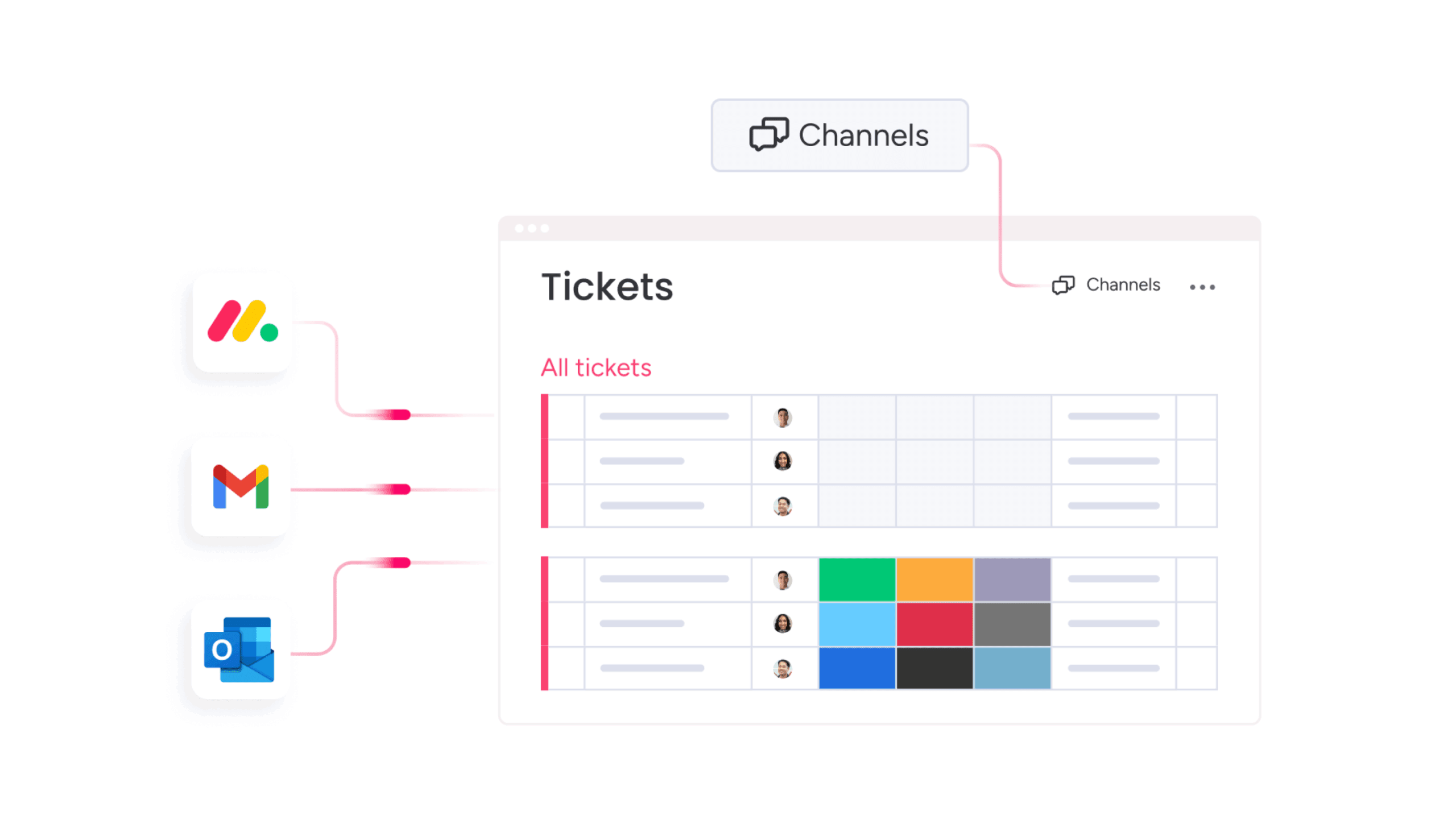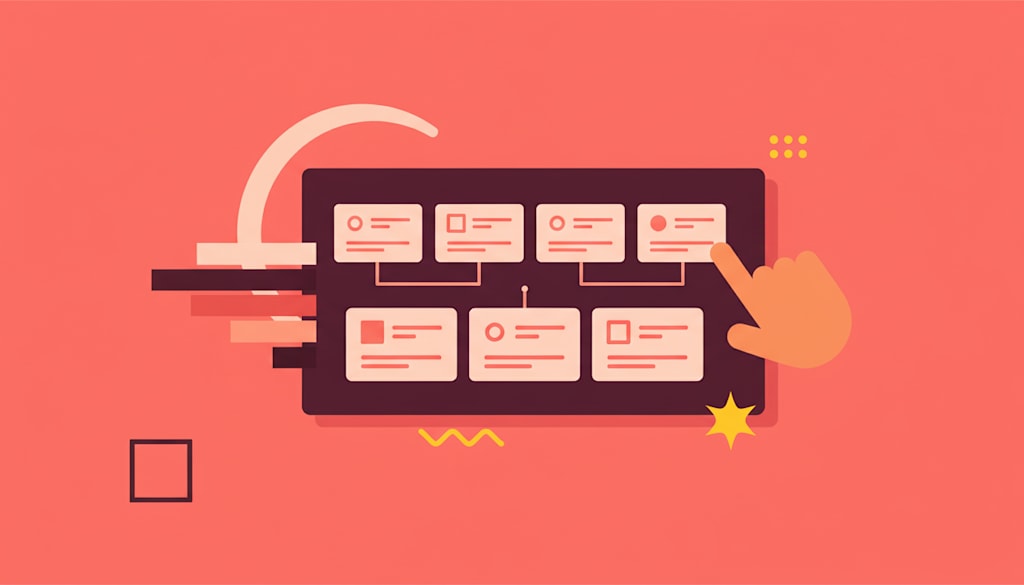Imagine a workplace where every request, whether for a new laptop, a benefits question, or a conference room booking, is handled with the same streamlined efficiency. For many, this is the reality for IT, but a maze of emails and spreadsheets for every other department. This gap does not just frustrate employees; it creates operational blind spots for leaders across the business.
Enterprise IT service management solves this by extending IT’s proven principles to every department. It replaces siloed, manual processes with a single, unified system for delivering services across the entire organization. This standardized approach ensures every request, from onboarding a new hire to approving a purchase order, is handled with the same efficiency and visibility.
This helpful post details what a sales methodology is and why it is critical for your team. It covers the key benefits of a unified service model, the core components of modern platforms, and how AI is transforming service delivery.
This article also provides a practical roadmap to implement enterprise service management and overcome common challenges along the way.
Key takeaways
- Unified IT service delivery: enterprise service management extends IT’s proven ticketing and workflow systems to every department, creating one unified platform for all service requests across your organization.
- Rapid ROI: organizations typically see positive ROI within two to three years through reduced costs and faster resolution times, with initial benefits appearing in just three to six months using a phased rollout approach.
- AI and no-code enablement: modern platforms, such as monday service, offer no-code customization and built-in AI that learns your organization’s patterns, automatically routing requests and suggesting solutions without requiring technical expertise.
- Build momentum strategically: success depends on getting executive buy-in across departments and starting with willing teams to build momentum before expanding to more resistant groups.
- AI transformation: AI transforms service delivery by predicting problems before they happen, automatically categorizing requests, and providing 24/7 self-service options that reduce manual workload.
What is enterprise IT service management?
Enterprise IT service management is when you apply IT service management principles across your entire organization, not just the IT department. This growing field is part of a market that, according to a report from Business Research Insights, is expected to reach USD 28 billion by 2032, reflecting its increasing importance.
The core concept is to disseminate established IT best practices across the enterprise. Rather than allowing departmental variance in request handling, the goal is to create a single, consistent system for organization-wide utilization.
Traditional ITSM limitations
Traditional ITSM processes only cover IT services. Your IT team has a ticketing system for password resets and software issues, but what happens when someone needs HR help or facility repairs?
Each department ends up creating its own process. HR uses email. Finance uses spreadsheets. Facilities might use paper forms. Nothing connects, and requests get lost between departments.
How ESM expands beyond IT
Enterprise service management takes those proven IT processes and extends them across your organization. Now every department can track requests, measure performance, and deliver consistent service.
This is demonstrated by the following examples of supported services:
- HR services: employee onboarding, time-off requests, benefits questions.
- Finance services: purchase approvals, expense reports, vendor payments.
- Facilities services: office moves, equipment repairs, building access.
- Legal services: contract reviews, compliance questions, policy updates.
Key differences between ITSM and ESM
The main difference is scope. ITSM serves IT. ESM serves everyone.
With traditional ITSM (ITIL), only IT requests get tracked and measured. With ESM, every service request across your organization follows the same standards. You get visibility into all operations, not just IT tickets.

Why enterprise IT service management matters for modern organizations
Your employees expect the same smooth experience they get from consumer apps. When they can order groceries with two taps, why should requesting office supplies take five forms and three approvals?
Enterprise ITSM meets these expectations by creating unified workflows that work across departments. Employees can instantly find the right form and know exactly who handles their request.
But the benefits go beyond convenience. When you standardize service delivery across your organization, you unlock strategic advantages:
- Faster digital transformation: connected departments can implement new technologies without creating new silos.
- Complete operational visibility: leaders see all service metrics in one place, not scattered across department reports.
- Reduced operational costs: automated workflows eliminate duplicate work and manual handoffs.
- Consistent compliance: standardized processes ensure every department follows the same rules
7 key benefits of enterprise IT service management
Enterprise IT service management does more than streamline requests. It creates the foundation for consistent, coordinated service across every department.
The benefits below highlight how a unified approach improves efficiency, visibility, and the overall employee experience.
1. Unified service delivery across all departments
Enterprise ITSM creates one system for all service requests. Employees submit everything through the same portal, whether they need IT help, HR support, or facility repairs.
This single entry point eliminates confusion about where to go for help. Teams can see related requests across departments and coordinate responses.
2. Enhanced cross-functional collaboration and visibility
Complex requests often need multiple departments. A new employee needs IT equipment, HR documentation, building access, and system permissions, so HR service management ensures a unified workflow.
With enterprise ITSM, these departments work from the same platform. Everyone sees the full request, knows their part, and tracks progress together.
3. Accelerated digital transformation initiatives
Digital transformation fails when departments cannot coordinate effectively. Enterprise ITSM provides the essential foundation for organization-wide change.
This transformation is enabled by platforms like monday service, which feature workflows that adapt to any department while maintaining consistent standards. Teams can then implement new processes without the necessity of starting from scratch.
4. Improved employee and customer experience
Employees get answers faster when every department uses the same efficient system. Self-service options let them solve simple issues without waiting.
This improved internal service translates to a superior customer experience. When your teams work smoothly together, they deliver more consistent and reliable results to customers.
5. Data-driven service operations and insights
You can’t improve what you can’t measure. Enterprise ITSM captures data from every service interaction across your organization.
Leaders gain insights into request volumes, resolution times, and bottlenecks. This visibility drives better decisions about staffing, processes, and investments.
6. Reduced costs through automation and efficiency
Manual processes waste time and money. Enterprise ITSM automates routine work like approvals, notifications, and task assignments.
These automations eliminate duplicate systems and reduce the time teams spend on administrative tasks, including IT asset tracking overhead. The savings add up quickly across an entire organization.
7. Scalable service management for growing organizations
Growth usually means chaos. New departments, locations, and services strain existing processes.
Enterprise ITSM scales smoothly because it’s built on consistent principles. Adding a new department means configuring workflows, not building new systems, which simplifies IT operations management.

Core components of enterprise service management platforms
Modern ESM platforms share key features that enable organization-wide service delivery. Understanding these components can really help you evaluate solutions and plan implementations.
Service catalog and self-service portal
A service catalog lists every service your organization offers in one searchable location. Employees browse available services, understand requirements, and submit requests through standardized forms.
Self-service portals take this further by providing immediate solutions for common requests. Password resets, policy documents, and FAQs are available 24/7 without human intervention.
Workflow automation and orchestration
Enterprise workflows involve multiple steps across departments. Automation ensures these steps happen in the right order without manual coordination.
A new hire workflow might include:
- IT tasks: order equipment, create accounts, assign licenses.
- HR tasks: process paperwork, schedule orientation, update systems.
- Facilities tasks: assign workspace, create access badges, update directories.
AI-powered capabilities and intelligence
AI transforms how enterprise service management handles routine work. It categorizes requests, routes them to the right teams, and suggests solutions based on past resolutions.
Modern solutions like monday service use AI to learn from your organization’s patterns. The more you use it, the smarter it gets at predicting needs and preventing problems.
Real-time analytics and dashboards
Real-time visibility helps you spot problems before they escalate. Dashboards show request volumes, SLA compliance, and team performance across all departments to support effective service operations.
These insights support continuous improvement. You can identify which processes need refinement and measure the impact of changes.
Integration and API capabilities
Your ESM platform must connect with existing systems. APIs enable data flow between your service management platform and other enterprise applications.
Common integrations include:
- HR systems: for employee data and organizational structure.
- Financial systems: for budget approvals and cost tracking.
- Communication platforms: for notifications and collaboration.
- Asset management: for equipment tracking and maintenance.
How AI transforms enterprise service management
AI isn’t just automation — it’s intelligence that improves how you deliver services. Here’s how AI service management changes enterprise service management in practical ways:
Automated ticket classification and smart routing
Every request needs to reach the right team quickly. AI reads incoming requests, understands the content, and routes them automatically.
The system learns from patterns. If facilities requests about conference rooms usually go to one team, AI remembers and routes similar requests there automatically.
Predictive analytics for proactive service
Why wait for problems? AI analyzes patterns to predict issues before they happen.
If printer maintenance requests spike every three months, AI can schedule preventive maintenance. If password reset requests increase after system updates, IT can prepare resources in advance.
Intelligent knowledge management
Knowledge bases only work when people find the right articles. AI surfaces relevant content based on the request context.
When someone asks about vacation policy, AI doesn’t just search for “vacation.” It considers the person’s location, department, and employment type to provide the most relevant policy.
AI-driven self-service experiences
Chatbots and virtual assistants handle routine questions without human involvement, which is where AI help desk software can significantly improve support. They guide employees through common processes and escalate complex issues to human agents.
intelligent platforms like monday service combine AI assistance with human expertise (simple requests get instant automated responses while complex issues receive personal attention).

"Our team LOVES the monday service platform and we’re already exploring how we could incorporate it for other departments, too. It has streamlined our workflow in a way that both our team and customers appreciate."
Andrew Marshall | VP Operations
״monday service provides clear insights into requests volume and types, response times, and trends - helping us continuously improve operations"
Grant De Waal-Dubla | CIO"The biggest value for us is speed and flexibility. You can get up and running in days, change anything instantly, and see everything in real time. And you don’t need a dedicated admin to do it."
Clive Camilleri | Head of People Tech & Operations5 steps to implement enterprise IT service management
This multi-phased methodology ensures you build a strong foundation, secure necessary buy-in, select the right platform, and manage the change effectively across every department, as detailed in the steps below.
Step 1: assess your current service management maturity
Start by mapping how each department currently handles service requests. Document existing workflows, systems, and pain points.
Interview stakeholders to understand what works and what frustrates them. This baseline helps you measure improvement and prioritize quick wins.
Step 2: define your enterprise service management strategy
Create a clear vision for your ESM implementation. Define success metrics, set realistic timelines, and identify resources needed.
Get executive sponsorship from leaders across departments. Their support is crucial for driving adoption and overcoming resistance.
Step 3: select the right ESM platform
Choose a platform that fits your organization’s needs and technical capabilities. Consider factors like ease of use, customization options, and integration capabilities.
Solutions like monday service offer no-code customization that lets teams configure workflows without IT involvement. This flexibility accelerates deployment and increases adoption.
Step 4: create your implementation roadmap
Plan a phased approach starting with willing departments. Early successes build momentum for broader rollout.
Begin with high-impact, low-complexity services. Quick wins demonstrate value and help teams learn the new system with manageable risk.
Step 5: drive cross-department adoption and change
Success depends on people embracing new ways of working, reflecting essential IT change management practices. Provide comprehensive training tailored to each department’s needs.
Celebrate early wins publicly. Share success stories that show how the new system makes work easier. Address concerns directly and provide ongoing support.
How to overcome common enterprise service management challenges
While Enterprise Service Management (ESM) offers immense benefits, its implementation across a large organization is inevitably met with specific cultural, technical, and adoption hurdles. Successfully navigating these common challenges requires a proactive strategy that emphasizes rigorous change management, tailored training, and meticulous technical planning.
Managing organizational change and culture
Resistance to change is a frequent obstacle, as people are often comfortable with established processes. Research from McKinsey shows that 70% of digital transformations fail due to employee resistance, underscoring the necessity of proactive change management.
- Clear communication: address resistance with clear communication about the benefits of the new system.
- Demonstrate value: show how ESM simplifies their work rather than increasing difficulty.
- Involve stakeholders: involve sceptics and key users in the planning process so they feel heard and valued.
Ensuring platform adoption across teams
Achieving organization-wide adoption is challenging because different departments have varying comfort levels and technical familiarity with new technology.
- Tailored training: tailor your approach to each team’s needs, providing role-specific training that focuses on their actual work.
- Quick guides: create simple quick-start guides for common tasks to ease the learning curve.
- Peer support: assign champions in each department to provide internal peer support and guidance.
Integrating with existing enterprise systems
Technical complexity during integration is inevitable, especially when connecting the new ESM platform with existing legacy or enterprise applications.
- Careful planning: plan integrations carefully and test them thoroughly before deployment.
- Prioritize critical systems: start with the most critical integrations first to ensure foundational stability.
- Smooth data flow: ensure data flows smoothly between systems without creating duplicate work or data conflicts.
Measuring ROI and service success
Demonstrating the tangible return on investment and successful service outcomes requires a rigorous approach to data collection and performance reporting.
- Clear metrics: demonstrate value with clear metrics. Track essential data points like resolution times, user satisfaction, and cost savings.
- Leadership updates: share regular updates with leadership showing progress toward defined goals.
- Illustrate impact: use both quantitative data (numbers) and qualitative information (stories) to illustrate the platform’s impact.

Transform your enterprise service delivery with monday service
With its intuitive system, monday service brings enterprise service management to life, connecting every department and acting as service operations management software for the entire organization.
Built on the proven monday.com Work OS, it adapts to your organization’s unique needs:
No-code customization for every service need
Create custom workflows without writing code. Drag-and-drop interfaces let teams build exactly what they need.
Start with templates for common services, then customize fields, automations, and approvals. Each department can maintain their specific requirements while following organizational standards.
AI-powered automation that scales
Built-in AI handles routine work automatically. It classifies tickets, routes requests, and suggests solutions based on your organization’s patterns.
As your organization grows, the AI learns and adapts. New patterns emerge, and the system adjusts without manual reconfiguration.
One platform connecting all your moving parts
By providing a unified platform, monday service connects and coordinates service delivery across your entire organization.
Integration capabilities connect to your existing systems. Data flows seamlessly between platforms while teams work in one unified interface.
Ready to transform your enterprise service delivery? Try monday service and experience unified service management across your entire organization.
Frequently asked questions
What is the difference between enterprise service management and SIAM?
Enterprise service management applies ITSM principles across all business departments to improve internal service delivery. SIAM (Service Integration and Management) specifically manages relationships with multiple external IT service providers to ensure they work together effectively.
How long does enterprise service management implementation typically take?
Enterprise service management implementation typically takes 6-18 months for full deployment across large organizations. Most companies see initial benefits within six months when using a phased approach that starts with pilot departments.
What is the typical return on investment for enterprise service management?
Organizations implementing enterprise service management typically see positive ROI within two to three years through reduced operational costs and improved productivity. The exact return depends on organization size, current maturity, and implementation scope.
Can small and medium businesses benefit from enterprise service management?
Small and medium businesses benefit significantly from enterprise service management by establishing scalable processes early. Starting with ESM prevents the formation of departmental silos and creates a foundation for efficient growth.
Which industries benefit most from enterprise service management platforms?
Healthcare, financial services, manufacturing, and technology companies see the greatest benefits from enterprise service management platforms. These industries have complex compliance requirements and multiple departments that must coordinate service delivery.
How does enterprise service management support remote and hybrid work models?
Enterprise service management supports remote and hybrid work by providing cloud-based service delivery accessible from anywhere. Employees submit requests, track progress, and access self-service resources regardless of their physical location, ensuring consistent service quality.
 Get started
Get started 

